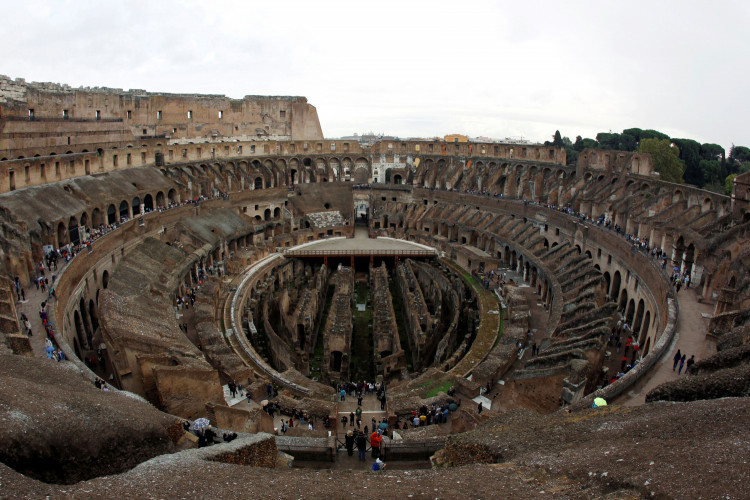Architects have designed a retractable floor for the Colosseum in Rome, allowing visitors to stand in the arena's center for the first time in thousands of years.
"It is an extraordinary project," Culture Minister Dario Franceschini said, describing plans to build a flexible floor to give visitors a better sense of what the arena must have looked like when gladiators fought to the death there.
"You will be able to walk on it and go to the center of the Colosseum, seeing it in the same way as visitors used to up to the end of the 19th century."
A structural engineering and design company, Milan Ingegneria, has won an €18.5 million ($22.2 million) bid to construct and install a retractable arena floor. The project is expected to be finished in the next two years.
Archaeologists demolished the last floor to gain a clearer view of the maze of rooms and corridors underneath the arena. It was never fully replaced.
The new, high-tech stage would be able to easily cover or expose the underground networks below, protecting them from rain or enabling them to be aired out.
Franceschini said the floor would be sustainable and reversible, which means that it could be removed if future plans for the Colosseum, which was built to hold up to 60,000 spectators, changed.
The stage would also be able to host cultural events, Franceschini added.
Officials stressed on Sunday that the flooring project aims to preserve the Colosseum's original image while still preserving the archaeological structures underneath.
Before the coronavirus hit, the Colosseum was Italy's most popular tourist attraction, attracting 7.6 million tourists in 2019.
The stone arena was the largest amphitheater in the Roman Empire when it was built 2,000 years ago. It once held up to 70,000 people and hosted gladiator fights, executions, and animal hunts.
It could also be filled with water and used to recreate sea battles.






